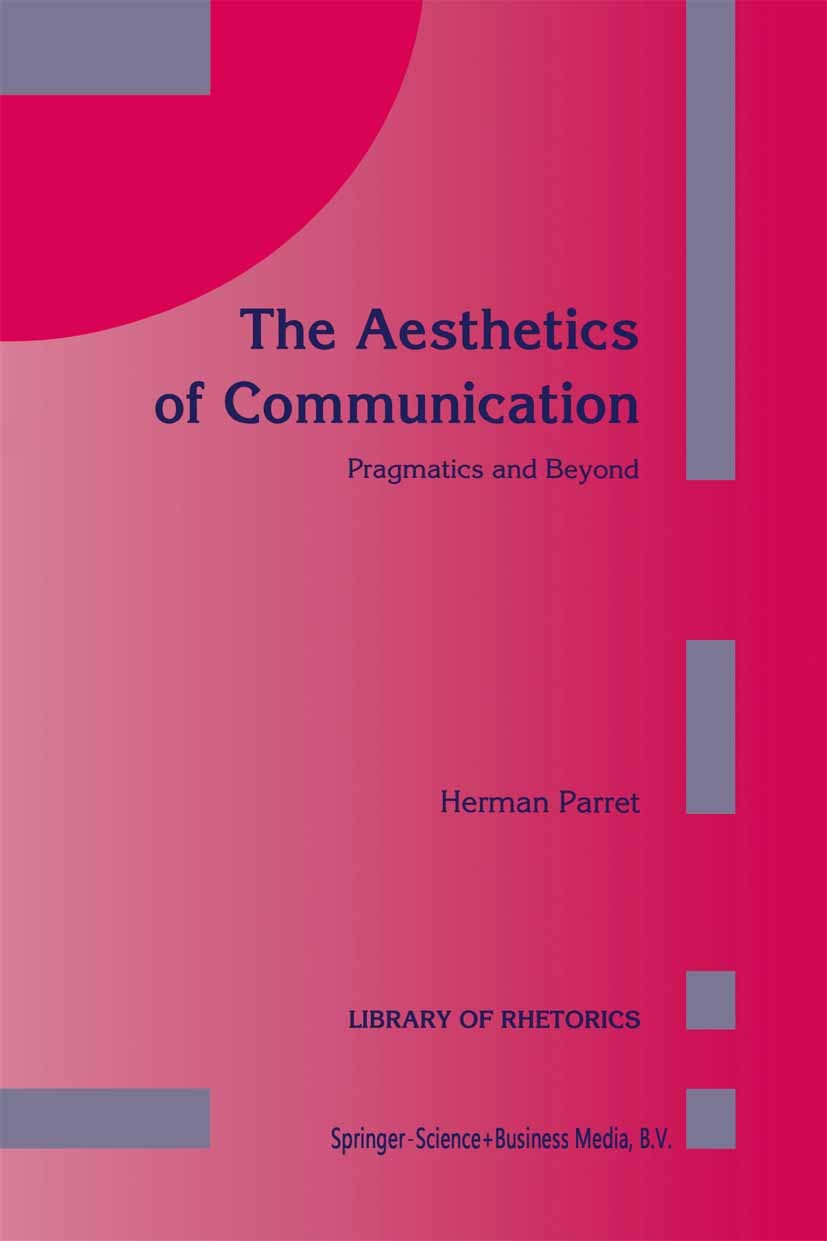| 书目名称 | The Aesthetics of Communication |
| 副标题 | Pragmatics and Beyon |
| 编辑 | Herman Parret |
| 视频video | http://file.papertrans.cn/905/904099/904099.mp4 |
| 丛书名称 | Library of Rhetorics |
| 图书封面 |  |
| 描述 | AESTHETICIZING PRAGMATICS The Gamut of Pragmatics Pragmatics emerged among the sciences of language at the end of the 1960‘s in reaction to certain totalizing models in linguistics: structuralism (primarily in Europe) and generative grammar (initially in the United States). Certain disciples of Chomsky became dissatisfied with autono mous syntax and later with generative semantics: they decided to break away from their mentor. Whereas Chomsky continued to talk a lot about very little, they defied him by speaking very suggestively about an exces sively broad range of phenomena. Pragmatics -which Bar-Hillel consid ered as a ‘wastebasket discipline‘ in the fifties - nevertheless gained respectability. The history of pragmatics spans, of course, much more than three decades. The Stoic conception of language, in the shadow of the great Greek tradition and therefore intensely subversive, had in fact a pragmatic aim. The term pragmatisch appears in Kant: it expresses a relation with a human goal, this goal being only determinable within a community. This characterization naturally inspires the pragmaticism of l the Neo-Kantian Charles Sanders Peirce . It is this Kant-Peirce lineage tha |
| 出版日期 | Book 1993 |
| 关键词 | Argument; Pathos; aesthetics; language; logic; memory; reason; sensibility; subject |
| 版次 | 1 |
| doi | https://doi.org/10.1007/978-94-011-1773-9 |
| isbn_softcover | 978-94-010-4779-1 |
| isbn_ebook | 978-94-011-1773-9Series ISSN 0929-6298 |
| issn_series | 0929-6298 |
| copyright | Springer Science+Business Media Dordrecht 1993 |
 |Archiver|手机版|小黑屋|
派博传思国际
( 京公网安备110108008328)
GMT+8, 2025-11-16 05:57
|Archiver|手机版|小黑屋|
派博传思国际
( 京公网安备110108008328)
GMT+8, 2025-11-16 05:57


